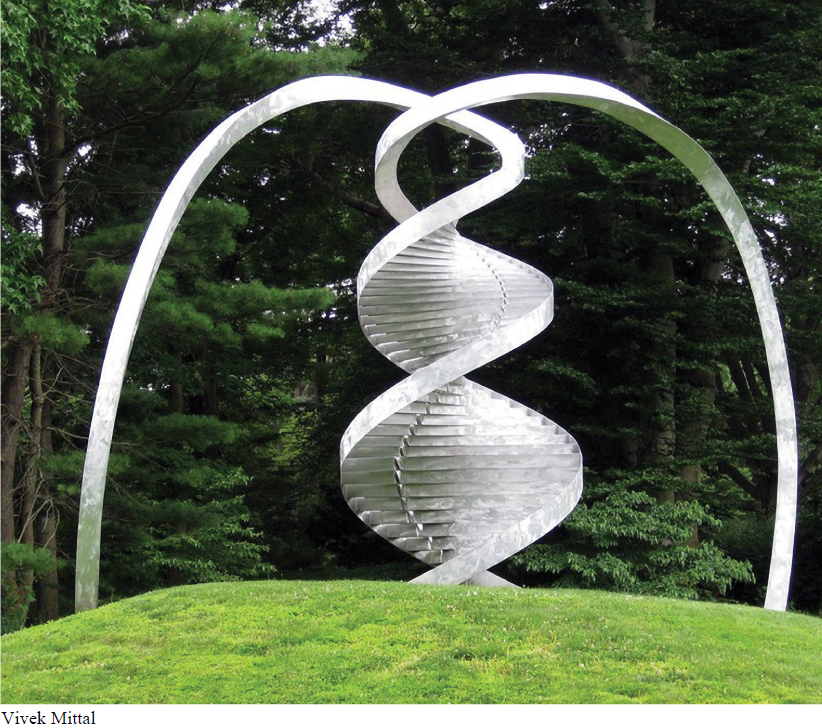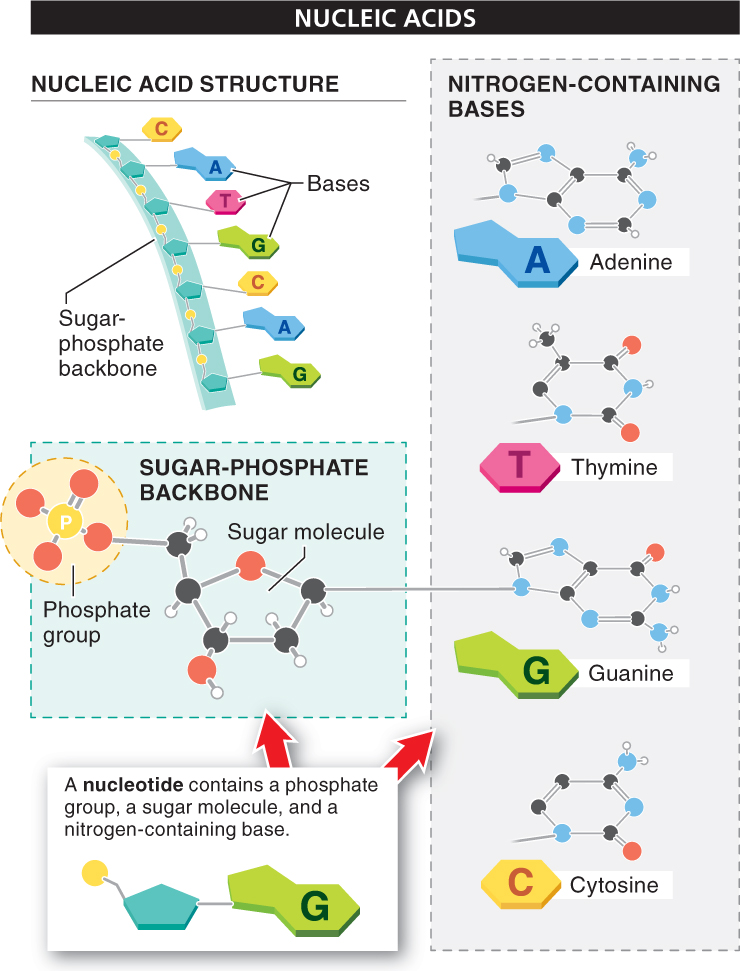
We have examined three of life’s macromolecules: carbohydrates, lipids, and proteins. We turn our attention now to the fourth: nucleic acids, macromolecules that store information. There are two types of nucleic acids: deoxyribonucleic acid (DNA) and ribonucleic acid (RNA). Both play central roles in directing the production of proteins in living organisms, and by doing so play a central role in determining all of the inherited characteristics of an individual.
Nucleic acids and are made up of individual units called nucleotides. All nucleotides have three components: a molecule of sugar, a phosphate group (containing a phosphorus atom bound to four oxygen atoms), and a nitrogen-

76
Nucleic acids store information in the order of bases attached at each position in the molecule’s backbone. At each position in a molecule of DNA, for example, the base can be any one of four possible bases: adenine (A), thymine (T), guanine (G), or cytosine (C). Just as the meaning of a sentence is determined by which letters are strung together, the information in a segment of DNA is determined by its sequence of bases. One DNA segment may have the sequence adenine, adenine, adenine, guanine, cytosine, thymine, guanine—
TAKE-HOME MESSAGE 2.20
The nucleic acids DNA and RNA are macromolecules that store information in their unique sequences of bases contained in nucleotides, their building-
What are the two types of nucleic acids and what function do they serve?
The two types of nucleic acids are deoxyribonucleic acid (DNA) and ribonucleic acid (RNA). Nucleic acids store information that is used to code proteins.